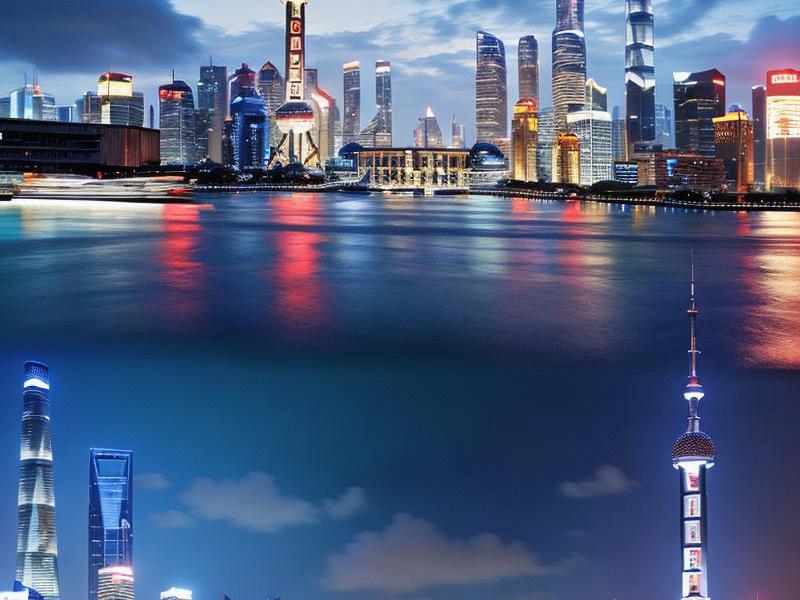Shanghai: A Global Metropolis in the Heart of China
⏱ 2025-05-01 00:36 🔖 上海品茶工作室
📢0℃

Shanghai, often referred to as the "Pearl of the Orient," stands as a beacon of modernity and progress in China. This dynamic city, located on the eastern coast of China, has undergone a remarkable transformation over the past century, evolving from a modest fishing village into one of the world's most influential metropolises.
Historically, Shanghai's strategic location along the Yangtze River Delta and its deep-water harbor made it a natural hub for trade and commerce. During the 19th century, the city became a treaty port, opening its doors to foreign trade and investment. This period of openness and exchange laid the foundation for Shanghai's rapid industrialization and urbanization in the early 20th century, earning it the nickname "Paris of the East."
Today, Shanghai is a global financial center, a major hub for trade and logistics, and a cultural melting pot. Its skyline is dominated by iconic skyscrapers such as the Shanghai Tower, which stands as the tallest building in China and the second-tallest in the world. The city's bustling financial district, known as Lujiazui, is home to the Shanghai Stock Exchange and a host of multinational corporations.
The economic vitality of Shanghai is unparalleled. It is the largest city in China by population and GDP, contributing over 30% of the country's total foreign trade. The city's advanced manufacturing sector, coupled with its thriving service industry, has made it a key player in the global economy. Shanghai's free trade zone, established in 2013, has further solidified its position as a gateway for international trade and investment.
爱上海419论坛 Culturally, Shanghai is a city of contrasts. It seamlessly blends traditional Chinese elements with Western influences, creating a unique cultural identity. The Bund, a historic waterfront promenade, offers stunning views of the modern skyline across the Huangpu River, while the nearby Yu Garden and the French Concession preserve the city's colonial past. Shanghai's art scene is also thriving, with galleries, theaters, and music venues showcasing both traditional and contemporary works.
The city's culinary scene is another testament to its cultural diversity. From the famous xiaolongbao (soup dumplings) of Nanxiang to the international flavors of the French Concession, Shanghai offers a gastronomic experience that caters to all tastes. The city's vibrant nightlife, with its rooftop bars, jazz clubs, and night markets, is a draw for both locals and tourists.
Innovation is at the heart of Shanghai's development. The city has invested heavily in research and development, making it a leader in science and technology. Zhangjiang Hi-Tech Park, often referred to as "China's Silicon Valley," is home to numerous high-tech companies and research institutions. Shanghai's commitment to innovation is also evident in its smart city initiatives, which leverage technology to improve urban living and sustainability.
Urban development in Shanghai is a story of ambition and resilience. The city has faced significant challenges, including rapid population growth, environmental concerns, and the need for sustainable urban planning. However, Shanghai has demonstrated a strong commitment to addressing these issues. The city's green initiatives, such as the construction of urban forests and the promotion of public transportation, aim to reduce carbon emissions and enhance the quality of life for its residents.
上海龙凤419官网
One of the most ambitious projects in Shanghai's urban development is the Maglev train, which connects the city center to Pudong International Airport at speeds of up to 430 kilometers per hour. This cutting-edge transportation system not only reduces travel time but also symbolizes Shanghai's dedication to innovation and progress.
Shanghai's role in global affairs is also noteworthy. As a member of the World Expo Organizing Committee, the city successfully hosted the 2010 World Expo, attracting millions of visitors from around the world. The event showcased Shanghai's ability to organize large-scale international events and highlighted the city's commitment to sustainable development.
The city's leadership in international cooperation is further exemplified by its role in the Belt and Road Initiative, a global development strategy proposed by China. Shanghai serves as a key node in this initiative, facilitating trade and investment between China and countries along the ancient Silk Road.
上海私人品茶 Despite its many achievements, Shanghai faces several challenges in the 21st century. The rapid pace of urbanization has led to issues such as housing shortages, traffic congestion, and environmental degradation. The city government has implemented various measures to address these challenges, including the construction of affordable housing, the expansion of public transportation networks, and the promotion of green technologies.
Shanghai's future will be shaped by its ability to balance economic growth with social and environmental sustainability. The city's leadership is committed to creating a livable and sustainable urban environment for its residents while maintaining its position as a global leader.
In conclusion, Shanghai is a city of extraordinary contrasts and opportunities. Its rich history, vibrant culture, and innovative spirit make it a unique and dynamic metropolis. As Shanghai continues to grow and evolve, it remains a symbol of China's rise as a global power and a testament to the potential of urban development in the 21st century.
Shanghai 2040: Where Futurism and Heritage Collide in China's Global MegacityShanghai 2040: How China's Global City Is Reinventing Urban LivingThe Phoenix of the East: How Shanghai is Reinventing Global Cultural InfluenceShanghai's Green Transformation: Pioneering Sustainable Urban Development in the 21st Century【摩登密码】从月份牌到元宇宙:上海女性审美百年流变录Shanghai's Vibrant Lifestyle, from Historical Pedigree to a Global Metropolis【特别调查】"共饮一江水:长三角生态绿色一体化发展示范区三年成效报告"【摩登密码】从石库门到元宇宙:上海女性的百年形象革命Shanghai’s Digital Elegance: Where Tradition Meets Tomorrow’s Frontier in BeautyShanghai's Nightlife Evolution: How Luxury Entertainment Clubs Are Redefining Urban Social Culture
海派烟火眉:上海美女的市井诗行与精神注脚《霓虹深处:南京东路百年商业街的进化论》《百乐门到元宇宙:上海娱乐会所进化论》霓虹与檀香:上海高端会所三十年文化流变"四段式模板
7. 历史参考:前两篇分别以"感官革命"和"时空折叠"为切入点,本次需创新视角
8. 时效元素:当前为2025年,可融入AI、元宇宙等现代科技元素
9. 价值导向:展现独立、智慧的当代上海女性形象,规避物化倾向
以下是符合要求的深度特稿:《梧桐树下的方程式:95后女科学家与旗袍实验室的双城记》《石库门密码:上海里弄建筑的时空折叠》《石库门里的时光标本》《梧桐树下的城市镜像》梧桐区镜像:上海女性的空间叙事与身份建构
空间修辞,身体政治,时尚语法,记忆拓扑,社群算法

